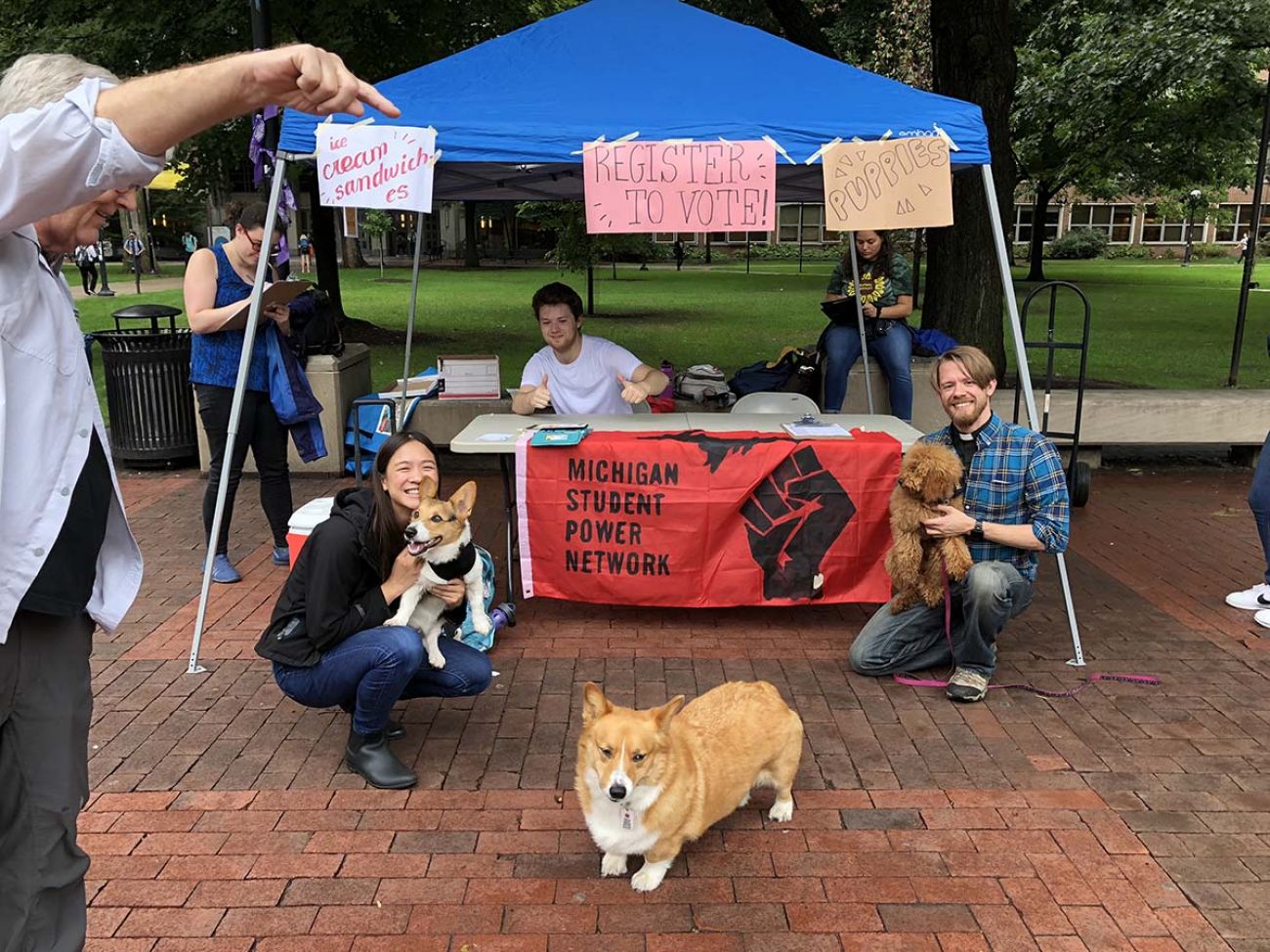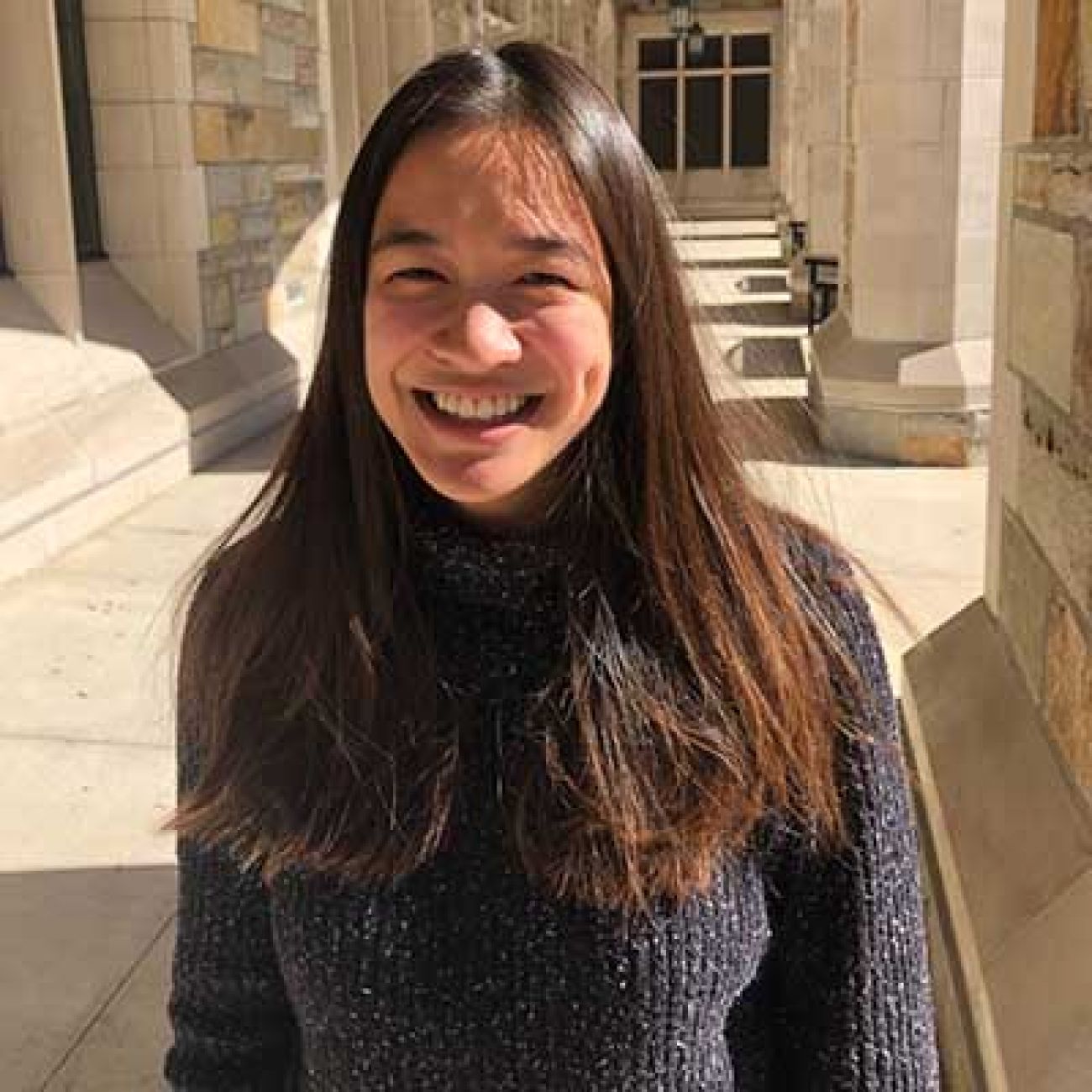Could this be the year Michigan college students actually vote?

Hoai An Pham was a freshman at the University of Michigan in the fall of 2014, during the last midterm election. She voted, but she said she understands why a lot of classmates didn’t bother.
“It can be inconvenient, especially in Michigan where you don’t have early voting, just standing in lines on a day when you have classes or may have exams coming up, especially on campus where the lines may be long, Pham said. “Sometimes it’s like, voting is kind of important, but what’s more immediate is my essay that’s due tomorrow.”
“Sometimes it’s like, voting is kind of important, but what’s more immediate is my essay that’s due tomorrow” ‒ Hoai An Pham, University of Michigan student
Just one in seven U-M students voted in 2014, the same lackluster rate at which students cast ballots 60 miles away at Michigan State University. At Central Michigan, 16 percent voted; at Michigan Tech, less than one in 10 made it from the dorm to the voting booth.
Overall in Michigan, 42 percent of voting-age adults cast ballots in 2014 – nothing to brag about, but three times the rate of students at the state’s largest colleges.
Low turnout at Michigan universities in 2014
A Tufts University study showed 19 percent of U.S. college students voted in the 2014 midterm elections among schools that participated. Here are voting rates at 10 Michigan universities that year:
University of Michigan-Dearborn: 28%
Wayne State University: 27.7%
Oakland University: 25%
Eastern Michigan University: 22.9%
NATIONAL AVERAGE: 19%
Saginaw Valley State University: 18.4%
Central Michigan University: 16%
Grand Valley State University: 15%
Michigan State University: 14.2%
University of Michigan: 14%
Michigan Tech: 9.4%
From ice cream and puppies to free shuttles to polling stations, campuses around Michigan are pulling out the stops this fall to try to boost student voting rates.
Those efforts, perhaps combined with a more intense national political climate, may be working. Motivation to vote among Michigan’s young voters (age 18-29) is double what it was two years ago, during the 2016 presidential election, according to polling conducted by Richard Czuba, founder of the Lansing-based Glengariff Group.
In a statewide poll in October 2014, young voters rated their motivation to vote at 5.9 on a scale of 10; in a similar poll in October 2016, young voter motivation dropped to 4.7
But in a statewide poll this month, young voter motivation was 9.0. That compares to a 9.5 motivation rating for all eligible Michigan voters in the poll.
“In 35 years, I’ve never seen motivation like this,” Czuba said. “Young people are going to vote. If I had one piece of advice for (elections officials), it would be to print more ballots.”
Related: 2018 Bridge Michigan Voter Guide: Links to our relevant election coverage
Getting students to vote could pay dividends for decades, said Cherie Strachan, assistant dean in the College of Liberal Arts and Social Sciences and a professor of political science at Central Michigan University.
“If you can get people to vote consistently in a couple elections, it becomes part of people’s practice,” said Strachan, who’s been involved in efforts at CMU to increase student voting this fall. “We all need to make these small contributions to make sure our democracy stays healthy.”
Researchers at Tufts University track college voting rates across the country by cross-referencing lists of enrolled students with national voter records. Not all colleges participate in the study, but at least 10 of Michigan’s public universities did in 2014.
The results were humbling.
The national voting rate at participating universities was 19 percent in 2014, during that last midterm election. Six Michigan public universities, including the state’s two largest, were below the national average. The University of Michigan-Dearborn (28 percent) and Wayne State University (27.7 percent) had the highest student voting rates.
“Honestly l think we’ve been embarrassed by our lack of participation, like we weren’t doing our job teaching the importance of voting,” said Edie Goldenberg, professor of public policy at the University of Michigan who helped found the school’s “Turn up Turnout” campaign to increase registration and voting.
One reason for low turnout: Michigan makes it difficult for college students to vote. State law requires students to vote based on the address on their driver’s license, rather than where they live. Michigan also does not have early voting days that might allow students to get home to vote.
Beyond those institutional barriers, CMU’s Strachan, who studies youth voting, said she also worries there is a “generational erosion” of civic responsibility that universities need to address. “We have this limited time of young adulthood to cultivate it,” she said.
Voting rates typically increase as people reach “adult milestones” such as having children or buying a home, Strachan said, but she worries that the current crop of college students are more divorced from civic responsibility than those in the past.
“When we ask, ‘What does it mean to be a good citizen?’ people from older generations are more likely to say things like reading a newspaper and paying attention to my community and voting so people like me are represented,” Strachan said.
“If you ask that of Millennials or Generation Z, they give you answers that sound more like being a Good Samaritan; they don’t include obligations to civic acts like voting.”
At the University of Michigan, several groups are working to register students to vote this fall. U-M’s Pham worked with one group that lured students in with Corgis and ice cream sandwiches.
“Most of the students we approached were already registered” because another group had already hooked them, Pham said.
The School of Art and Design offered a class this semester called “Voting is sexy.” The class made posters encouraging students to register and vote, as well as several videos.
About 15,000 U-M students registered to vote through TurboVote, a national registration effort, will get text reminders to head to the polls. Faculty encouraged students to register, and have been asked to remind students to vote on election day, Goldenberg said.

“We’re trying to create an atmosphere of expectation that people will do this,” Goldenberg said, “because that’s what adults do ‒ they participate in our democracy.”
At Michigan State, voter registration booths were set up at freshmen orientation, and there is more nonpartisan election information available around campus than before past elections.
“We have campaigns that talk about what happens when people don’t vote,” said Renee Brown, director of the Center for Service-Learning and Civic Engagement at MSU. “Students still need convincing that their vote makes a difference.”
Both U-M and MSU are offering free voter shuttles to get students to polling stations Nov. 6.
Youth registration surged in Michigan this year, and registration rates nationally offer hope that young voters will cast more ballots this year.
“I think people are definitely more interested in the election cycle this year,” said U-M’s Pham. “They see a lot of things are at stake.”
Related: 2018 Bridge Michigan Voter Guide: Links to our relevant election coverage
See what new members are saying about why they donated to Bridge Michigan:
- “In order for this information to be accurate and unbiased it must be underwritten by its readers, not by special interests.” - Larry S.
- “Not many other media sources report on the topics Bridge does.” - Susan B.
- “Your journalism is outstanding and rare these days.” - Mark S.
If you want to ensure the future of nonpartisan, nonprofit Michigan journalism, please become a member today. You, too, will be asked why you donated and maybe we'll feature your quote next time!

